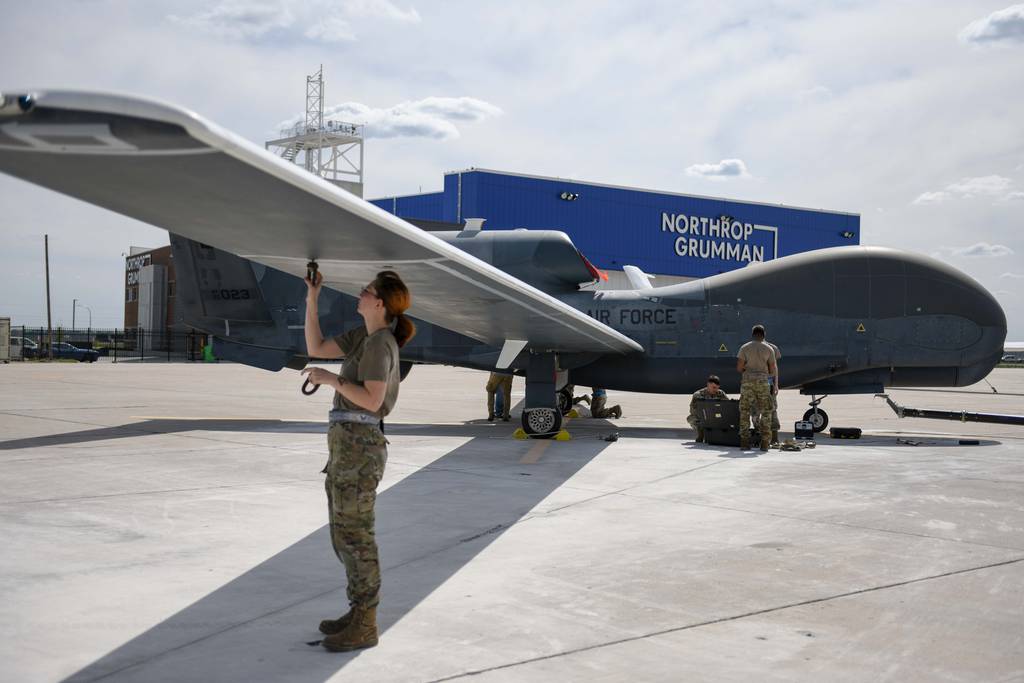WASHINGTON — Last spring, the Pentagon’s Test Resource Management Center received requests from two program offices to provide support for upcoming hypersonic flight tests — one over the Atlantic Ocean and one over the Pacific.
The flights would be 10 days apart.
In the past, the testing community wouldn’t have been able meet that demand, according to George Rumford, TRMC’s director. It would take weeks — and sometimes months — to reposition the ships the Pentagon has traditionally relied on to track hypersonic test vehicles in flight and ensure the programs had the proper instrumentation in place.
“One of those programs would have been told that they need to sit on their hands for weeks, if not months, waiting for us to arrange the infrastructure to support their test,” Rumford told C4ISRNET in an interview.
But this time, Rumford’s team had a new capability available — a fleet of three uncrewed Range Hawk aircraft equipped with sensors and instrumentation to support hypersonic flight tests from the air. The drones, part of a program called SkyRange, provide the Pentagon with a flexible, airborne testing infrastructure.
Rumford and his office declined to name the systems that were tested, but said that because of SkyRange, which became operational last year, TRMC was able to support the quick turnaround that the programs needed.
“With SkyRange, our nation was able to do a hypersonic test in the Atlantic and in a matter of days do a hypersonic test in the Pacific,” he said. “That is a significant accomplishment.”
The U.S. military is investing in hypersonic research and development efforts aimed at fielding weapons and aircraft that can travel and maneuver at speeds above Mach 5. Access to flight test support and ground test infrastructure has been a significant limiting factor in that development, and the Pentagon has been working in recent years to change that.
Growing the SkyRange fleet
In 2022, the department set a goal to increase its hypersonic flight test cadence from about 12 events per year to 50, or about one per week. Rumford said TRMC is prioritizing efforts like SkyRange that bring the speed and flexibility to hopefully help the department achieve that goal over time.
The aircraft that make up the SkyRange fleet are called Range Hawks — decommissioned RQ-4 Global Hawks, once used by the Air Force for intelligence, surveillance and reconnaissance missions. The first three of these aircraft are older, Block 10 models that have been converted to track overhead systems.
In fiscal 2023, SkyRange supported 10 hypersonic flight tests, and Rumford expects that to grow to more than 15 in FY24.
The SkyRange fleet is also poised to grow in the coming years as TRMC and Northrop Grumman, which built the Global Hawk, convert retired Block 20 and 30 Global Hawk models into the Range Hawk configuration. Those conversions will begin this year and by FY25, SkyRange should have additional Range Hawks in its fleet to support hypersonic testing, Rumford said.
Flying testbed
The Pentagon is investing in other efforts beyond SkyRange to boost hypersonic flight and ground testing. Through the Multi-Service Advanced Capability Hypersonics Test Bed program, or MACH-TB, TRMC and the Navy are working with industry to create a flying testbed that can validate subsystems, advanced materials and other technologies as a system is being developed.
Rumford noted that prior to MACH-TB, programs rarely had opportunities to validate that individual systems and components could function in a hypersonic flight environment before a full-up flight test.
“In a typical hypersonic flight test, there might be more than a dozen things flying for the first time, all having risk associated with them, all bundled into that big flight test,” he said. “MACH-TB can provide a flying testbed in a repeatable, affordable environment.”
TRMC is also working with the Defense Innovation Unit to funnel emerging technology into MACH-TB through the Hypersonic and High-Cadence Airborne Testing Capabilities program, dubbed HyCAT.
“The intent of that is to try to discover innovative approaches that are extremely affordable, reusable, that can possibly provide things that we currently don’t have today, make some tech maturity investments in them, and then once that once that technology matures, we will transition it from HyCAT to the MACH-TB program,” Rumford said.
On the ground side, TRMC is investing in improvements to government-owned test facilities and is partnering with private sector organizations to address shortfalls in propulsion testing for air-breathing hypersonic vehicles and aeroshell materials for boost-glide systems.
Rumford highlighted a test and integration company called CUBRC, based in New York, that provides hypersonic testing services and is looking to make its wind tunnels more representative of a hypersonic flight environment.
“There are some facilities that we are investigating, planning development strategies to refurbish and bring back online so that they can be able to meet our hypersonic needs,” Rumford said.
Courtney Albon is C4ISRNET’s space and emerging technology reporter. She has covered the U.S. military since 2012, with a focus on the Air Force and Space Force. She has reported on some of the Defense Department’s most significant acquisition, budget and policy challenges.








